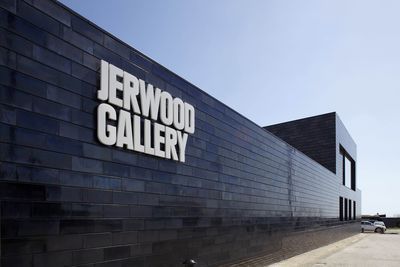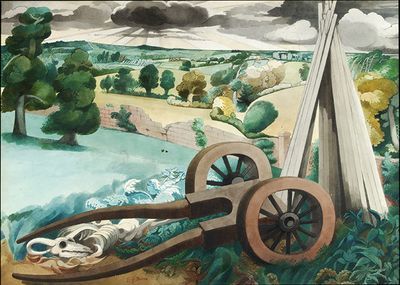Edward Burra in Hastings
By ADRIAN TAHOURDIN
The Conservative MP for Hastings and Rye, Amber Rudd, described Hastings in 2013 as ���a bit depressing���. She may have a point, but that���s perhaps not the sort of comment that constituents would expect from their parliamentary representative. It turns out it did her little harm as she was re-elected earlier this month, with an increased majority. Nor did her as yet unfulfilled pledge, also made in 2013, to have the burnt-out pier ���rebuilt just in time for the election��� damage her electorally, it would seem. Incidentally, what���s with arsonists��� apparent obsession with seaside peers? Their handiwork can be seen up and down the British coast.
I wonder whether Amber Rudd has visited the Jerwood Gallery, which has graced Hastings���s seafront since it opened in 2012 as a ���permanent home in the public domain for the Jerwood Collection of twentieth and twenty-first-century British art���. According to Alan Grieve, Chairman of the Jerwood Charitable Foundation, ���the Collection has been created to underline the strength of Jerwood in supporting the visual arts, enriching a cultural heritage and stimulating regeneration in Hastings���. Blending in nicely with the black-painted wooden fishing huts and alongside the Fishermen���s Museum, the airy gallery is a gem, smaller than the modernist De La Warr Pavilion just up the coast in Bexhill-on-Sea, but scoring highly in quality. It includes works by Walter Sickert, David Bomberg, Christopher Wood, a surprisingly fine L. S. Lowry, Keith Vaughan (five works), John Minton, Julian Trevelyan, Maggi Hambling, among others.
The three current exhibitions feature a room of work by the Sudanese artist Ibrahim El-Salahi (until May 31), two rooms of works from the Fleming Collection which, according to the Jerwood, is ���widely regarded as the finest collection of Scottish art in private hands��� (there are several paintings by John Bellany). That runs until July 12.
The rather more local Edward Burra (1905���76) has two rooms dedicated to him upstairs (until June 7). Burra, who lived most of his life in and around Rye, dismissed the town as a ���ducky little Tinkerbell towne��� and ���like an itsy bitsy morgue quayte DEAD���. He was afflicted with arthritis from an early age (deforming his painting hand), but he still managed to travel widely, to Paris in the 20s, New York in the 30s; his depictions of the Harlem scene are particularly striking. Then there was Spain at the time of the Civil War, the horror of which he captured in his inimitable, visionary way. He spent the war mostly in Rye, witnessing the Battle of Britain at first hand.
The two rooms in the small exhibition (on a wall outside the rooms is John Banting's piercing 1930s portrait of Burra) mostly focus on his Sussex-based work, the most striking of which, in my view, is the pencil-and-watercolour ���Landscape near Rye��� (1943���5, below). Note the ominous dark clouds in the distance, the whole composition seems strange, with the dishevelled wigwam and the sheep's skull nestled between the arms of a plough in the foreground.
Andrew Graham-Dixon began his brilliant hour-long BBC documentary (broadcast to coincide with a Burra exhibition at the Pallant House Gallery in Chichester in 2011) with the words ���This is a film about the most intriguing twentieth-century artist you may never have heard of". If that is the case, can I urge you to discover him?
Peter Stothard's Blog
- Peter Stothard's profile
- 30 followers





